
Blue Star Juniper Bonsai Tree for Beginners: Complete Care, Pruning, and Styling Tips
Dreaming of growing a bonsai that’s both stunning and surprisingly low-maintenance? The blue star juniper bonsai tree might be the perfect starting point 
But here’s the challenge: while the blue star juniper is beginner-friendly, proper care, pruning, and styling still matter if you want it to thrive. Confused about when to trim? Not sure how to style it or keep it healthy year-round? You’re not alone.
In this step-by-step guide, you’ll learn everything you need to grow, shape, and confidently care for a blue star juniper bonsai tree — even if you’ve never owned a bonsai before. Let’s dive into the tips that will help your tiny tree make a big impact.
Table of Contents
Toggle What Is a Blue Star Juniper Bonsai Tree?
What Is a Blue Star Juniper Bonsai Tree?
The Blue Star Juniper bonsai tree is a miniature version of the popular Blue Star Juniper shrub—a hardy, evergreen conifer known for its eye-catching blue-green foliage, slow growth, and compact size. It’s especially loved by beginners and bonsai enthusiasts alike for its low-maintenance nature, sculptural form, and striking year-round color 
 Compact Beauty in Miniature Form
Compact Beauty in Miniature Form
The Blue Star Juniper grows in a dense, mounded shape with needle-like leaves that radiate a cool silvery-blue hue. These trees naturally develop a layered, cushiony look, making them visually stunning even with minimal shaping. As a bonsai, they typically stay under 12 inches tall but can still evoke the grandeur of a full-grown tree 
 Tough, Yet Forgiving
Tough, Yet Forgiving
What makes this bonsai beginner-friendly is its resilience. Blue Star Junipers tolerate a variety of climates, adapt well to pruning, and resist many pests and diseases. As long as you give them plenty of sunlight, well-drained soil, and avoid overwatering, they’ll thrive. Their slow-growing habit also means less frequent repotting and trimming—perfect if you’re just getting started!
 Symbolism and Style
Symbolism and Style
In bonsai culture, junipers represent endurance and flexibility, often shaped into dramatic windswept or cascading styles. The Blue Star variety, with its naturally elegant form, lends itself well to classic bonsai aesthetics without needing advanced styling techniques—ideal for beginners wanting to make something beautiful without years of training.
 A Great First Tree
A Great First Tree
Whether you’re new to bonsai or just want a fuss-free addition to your collection, the Blue Star Juniper offers the perfect balance of beauty, durability, and ease of care. It’s a tree that rewards attention without demanding perfection 

In short? The Blue Star Juniper bonsai is a stellar entry point into the bonsai world—compact, beautiful, and easy to care for. Perfect for turning your windowsill or patio into a tiny zen garden!
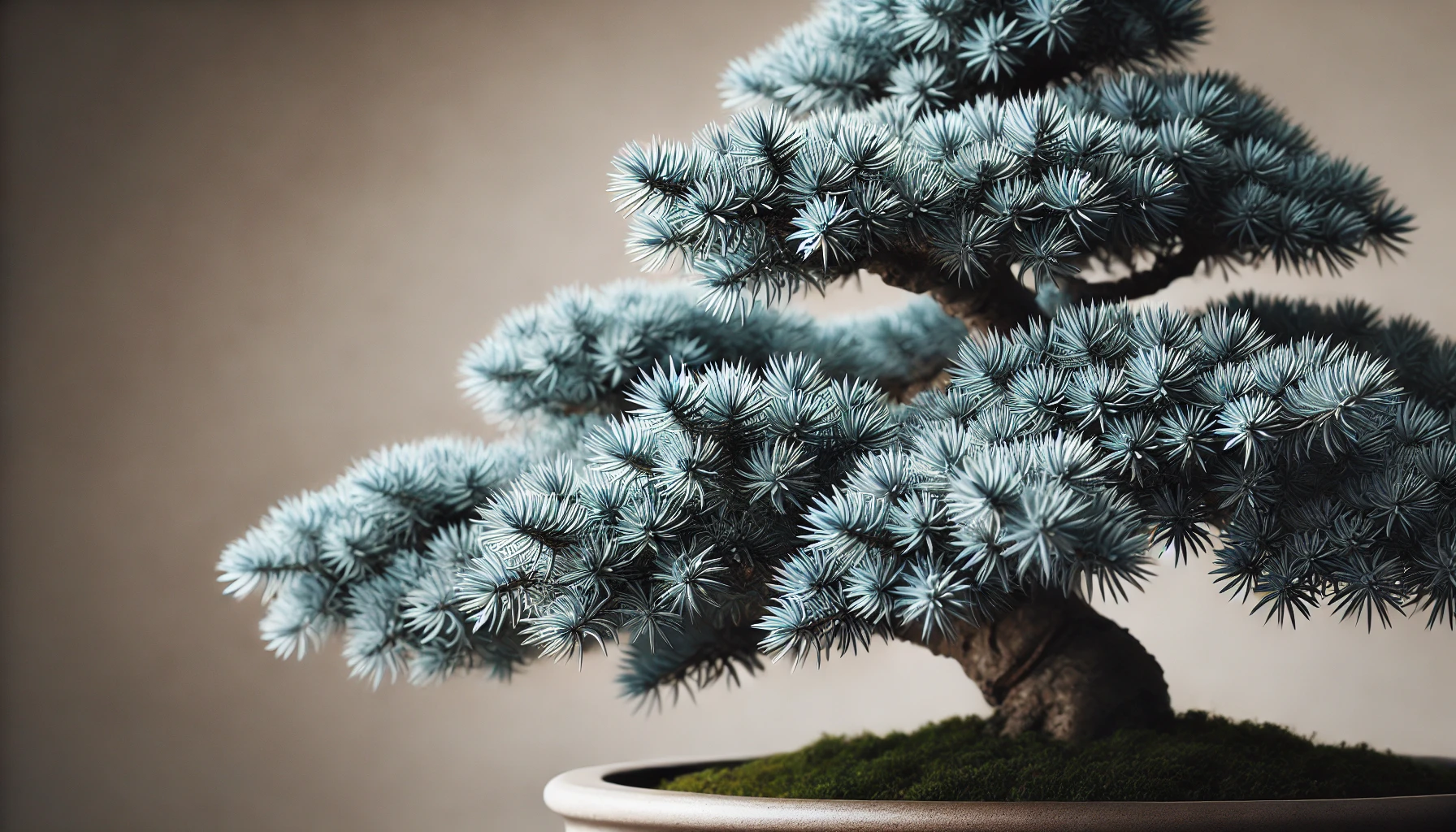
 Ideal Growing Conditions
Ideal Growing Conditions
Creating the perfect environment for your Blue Star Juniper bonsai is the secret to keeping it healthy, happy, and beautifully shaped 
 Sunlight: Bright & Direct
Sunlight: Bright & Direct
Blue Star Junipers thrive in full sun. They need at least 6–8 hours of direct sunlight daily to maintain their compact shape and vibrant blue-green needles. If you’re growing it outdoors (which is ideal), place it in a south- or west-facing spot for best results.

 Temperature: Loves the Cold
Temperature: Loves the Cold
This hardy bonsai loves cool to cold climates and can tolerate frost and snow. In fact, Blue Star Junipers require winter dormancy, so keeping them outside during winter is beneficial. Just protect the roots from freezing solid by mulching or placing the pot in a sheltered area.
Temperature range:
- Ideal: 10°F to 85°F (-12°C to 29°C)
- Avoid: Prolonged exposure above 90°F (32°C) without shade or humidity
 Watering: Keep It Moist, Not Soaked
Watering: Keep It Moist, Not Soaked
Let the soil slightly dry out between waterings, but never let it become bone dry or waterlogged.
- Check daily in summer, especially on hot or windy days
- Use the chopstick method or feel 1 inch below the surface
- Always use a well-draining bonsai soil mix to avoid root rot

 Airflow & Humidity: Keep It Breezy
Airflow & Humidity: Keep It Breezy
Good air circulation helps prevent pests and fungal issues. Outdoors naturally provides this, but if growing indoors, use a small fan nearby.
Humidity isn’t a major concern for junipers, but very dry indoor air (especially in winter) can be harsh. Mist occasionally or use a humidity tray if needed.
By giving your Blue Star Juniper bonsai the right mix of sunlight, fresh air, and careful watering, you’ll set the stage for a resilient and thriving miniature tree 
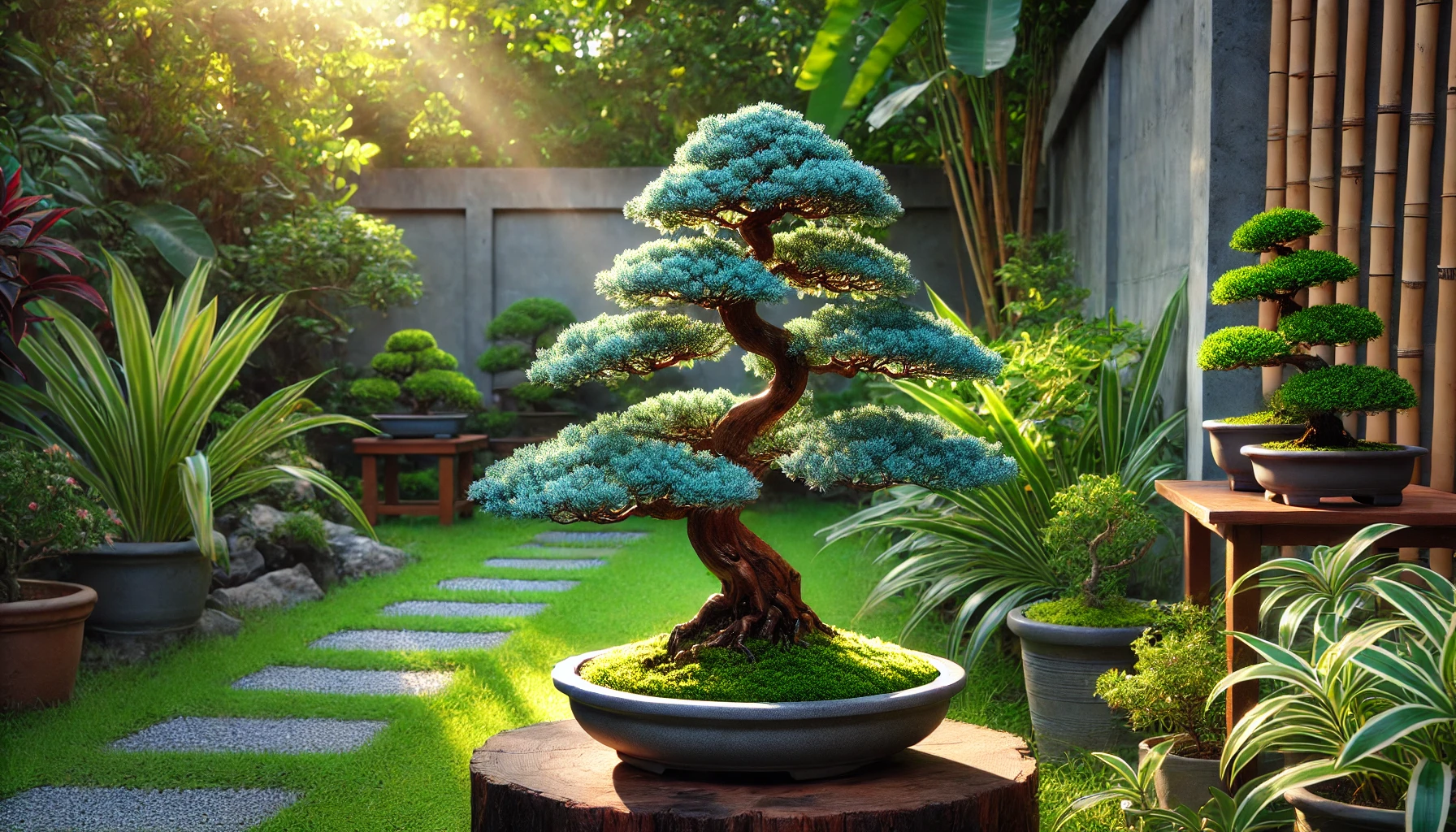
 How to Plant or Repot a Blue Star Juniper Bonsai
How to Plant or Repot a Blue Star Juniper Bonsai
Repotting or planting your Blue Star Juniper Bonsai the right way is key to a thriving, healthy tree. Whether you’re starting fresh or upgrading to a new pot, here’s everything you need to know
 When to Plant or Repot
When to Plant or Repot
- Best Time: Early spring or late fall is ideal. The tree is less active, reducing stress.
- Frequency: Every 2–3 years for young bonsai. Mature trees? Every 4–5 years is enough.

 What You’ll Need
What You’ll Need
- Bonsai pot with drainage holes
- Akadama, pumice, and lava rock mix (or cactus soil + sand for beginners)
- Root rake or chopstick
- Scissors or bonsai shears
- Mesh screen (for drainage)
- Wire (to secure the tree)
 Step-by-Step Guide
Step-by-Step Guide
1. Prep the New Pot
- Add a mesh screen over drainage holes
- Pour in a base layer of bonsai soil
2. Gently Remove the Tree
- Carefully take the tree out of its current pot
- Use a chopstick or root rake to loosen the roots
- Trim away ~20% of the outer roots with sterilized shears
3. Position and Secure
- Place the tree slightly off-center (for style and balance)
- Use bonsai wire to anchor it through the drainage holes—this keeps it stable!
4. Add Fresh Soil
- Add soil around the roots, pressing gently with a chopstick to remove air pockets
- Keep the surface flat and tidy
5. Water Thoroughly
- Water until it drains freely from the bottom
- Place the bonsai in partial shade for 1–2 weeks to recover
 Common Mistakes to Avoid
Common Mistakes to Avoid
Don’t over-prune roots—it stresses the tree
Don’t repot in summer heat or winter frost
Don’t use heavy garden soil—it suffocates roots
 Pro Tip
Pro Tip
Add a thin top layer of moss or fine gravel to retain moisture and give your bonsai that “finished” look
By following these steps, your Blue Star Juniper Bonsai will settle into its new home and thrive for seasons to come. Repotting may sound intimidating, but once you do it right, it becomes a rewarding ritual of bonsai care
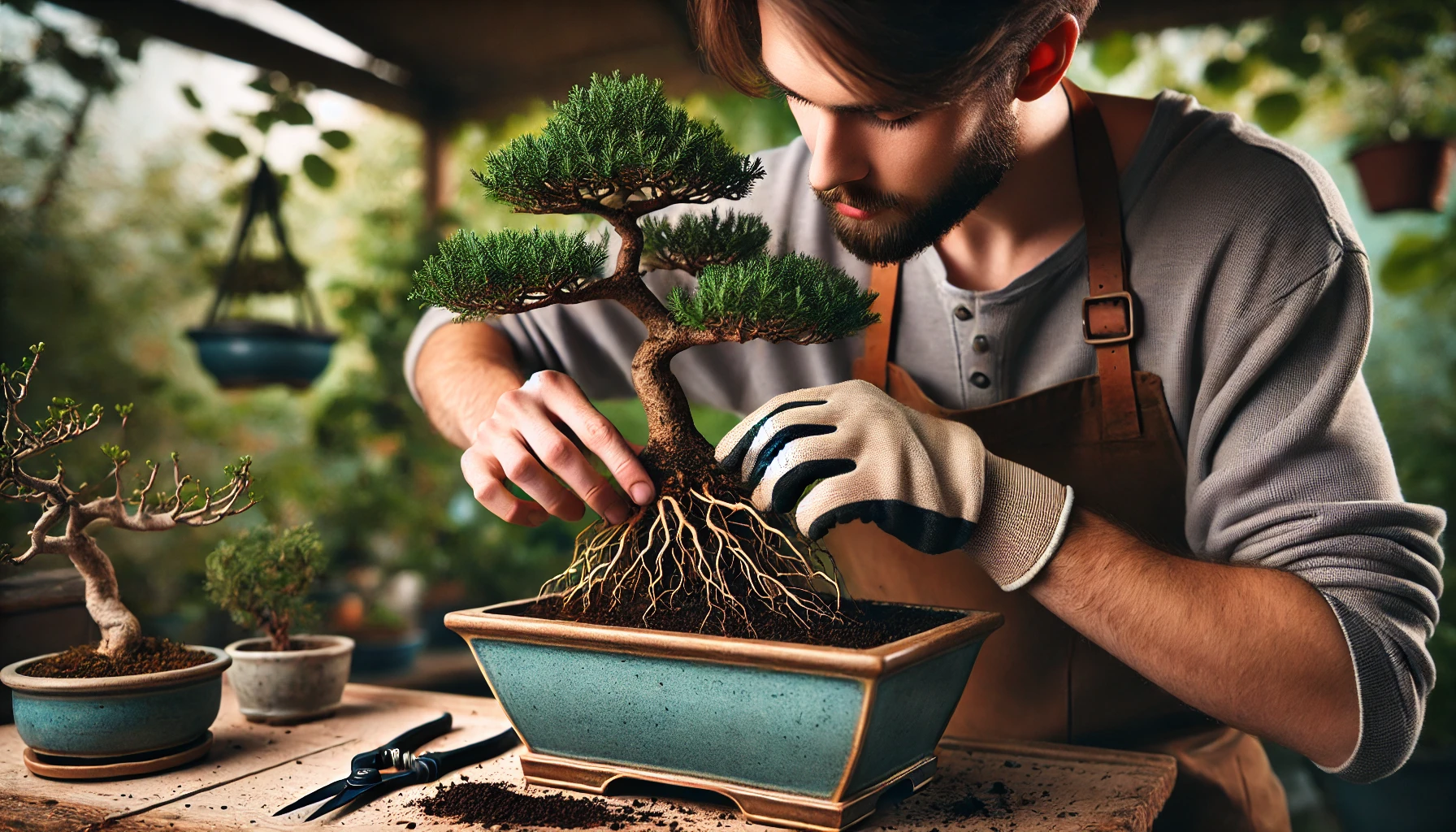
 Watering & Fertilizing Needs
Watering & Fertilizing Needs
Caring for your Blue Star Juniper Bonsai starts with getting watering and fertilizing just right. These two simple habits are the key to a healthy, happy tree 
 Watering: Keep It Moist, Not Soaked
Watering: Keep It Moist, Not Soaked
Blue Star Junipers like their roots to stay moist—but not soggy. Here’s how to do it right:
- Check Daily: Stick your finger about an inch into the soil. If it feels dry, it’s time to water.
- Soak Thoroughly: Water deeply until it runs out of the drainage holes. This ensures the entire root system gets hydrated.
- Avoid Overwatering: Don’t water on a strict schedule. Let the soil tell you what it needs. Too much water can cause root rot!
- Use a Spray Bottle: Lightly mist the foliage on dry, hot days to keep it cool and fresh
.
- Seasonal Tips: In summer, you may water daily. In winter, water less—but never let the soil fully dry out.

 Fertilizing: Feed It Right, Grow It Strong
Fertilizing: Feed It Right, Grow It Strong
Your bonsai needs regular nutrients to thrive. Think of fertilizer as its “vitamin boost” 
- Frequency:
- Spring & Summer (growing season): Feed every 2–4 weeks.
- Fall: Once a month is enough.
- Winter: Skip it—your tree is resting
.
- Type of Fertilizer:
- Use a balanced bonsai fertilizer (e.g., 10-10-10 or 14-14-14).
- Liquid or slow-release granules both work—just follow package instructions.
- How to Apply:
- Water before fertilizing to avoid root burn.
- Avoid fertilizing a stressed or freshly repotted tree.

By mastering these watering and feeding routines, your Blue Star Juniper will grow strong, vibrant, and ready for stylish bonsai shaping. Stay consistent, observe your tree daily, and you’ll build a thriving bonsai habit you’ll love!
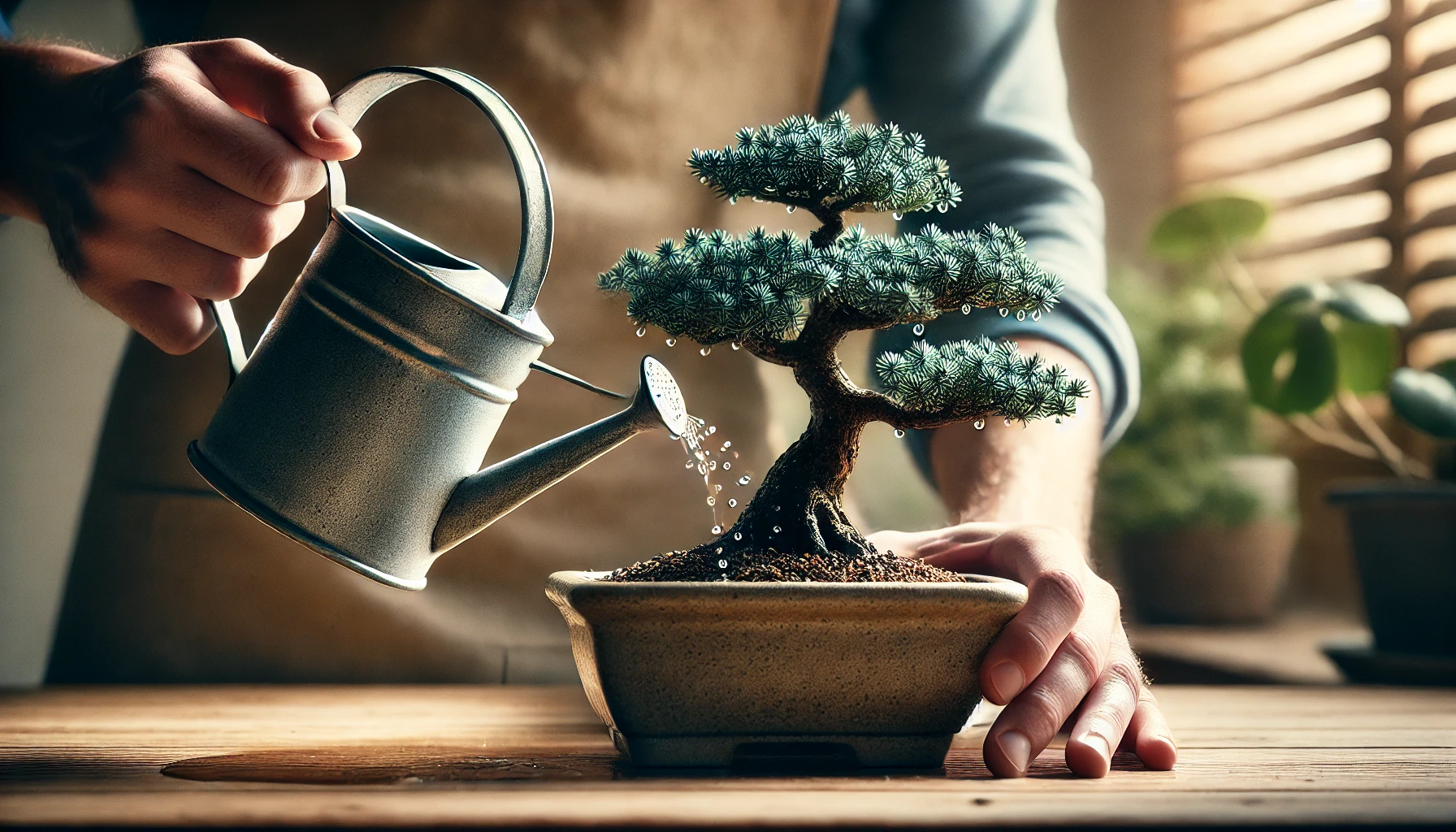
 How to Prune and Shape a Blue Star Juniper Bonsai
How to Prune and Shape a Blue Star Juniper Bonsai
Pruning and shaping your Blue Star Juniper bonsai is key to keeping it healthy, beautiful, and full of character. Done right, it helps maintain the compact, dense form that makes this bonsai so striking 
 When to Prune
When to Prune
The best time to prune your Blue Star Juniper is in late spring to early summer, when the plant is actively growing. Light maintenance pruning can be done year-round, but avoid heavy pruning in late fall or winter 
 Step-by-Step Pruning Guide
Step-by-Step Pruning Guide
- Start with Dead or Dying Growth
- Look for brown, brittle, or dead branches.
- Snip them off cleanly at the base using sharp bonsai scissors.
- Thin for Airflow and Light
- Gently remove any overly dense inner foliage.
- This helps prevent mold and lets light reach all parts of the plant
.
- Trim for Shape
- Focus on maintaining the dome-like silhouette that Blue Star Junipers are known for.
- Clip back overly long shoots to encourage a tighter, more compact form.
- Never Cut the Main Trunk
- Stick to trimming secondary branches and new growth.
- The trunk gives your bonsai its age and personality—preserve it!
- Pinch, Don’t Pluck
- Avoid plucking foliage with your fingers—it can damage the branches.
- Always use clean, sharp tools for precise, healthy cuts.
 Shaping with Wiring
Shaping with Wiring
Wiring helps guide the shape and flow of your bonsai over time. Here’s how:
- Use Aluminum Wire: It’s soft, easy to bend, and beginner-friendly.
- Wrap Carefully: Wrap wire around the branch at a 45° angle—not too tight!
- Bend Gently: Shape the branch slowly and smoothly. No sudden bends.
- Remove After 2–3 Months: Don’t leave the wire on too long or it may scar the branch.

 Aftercare
Aftercare
After pruning or wiring:
- Mist the tree lightly to reduce stress.
- Place it in indirect light for a few days to recover
.
- Avoid fertilizing for about a week post-pruning.
 Pro Tips
Pro Tips
- Less is more—prune a little at a time. You can always cut more later!
- Keep your tools clean to avoid spreading disease.
- Always step back and view the tree from all angles while shaping.
By learning how to prune and shape your Blue Star Juniper bonsai properly, you’re not just maintaining a plant—you’re crafting a living sculpture 
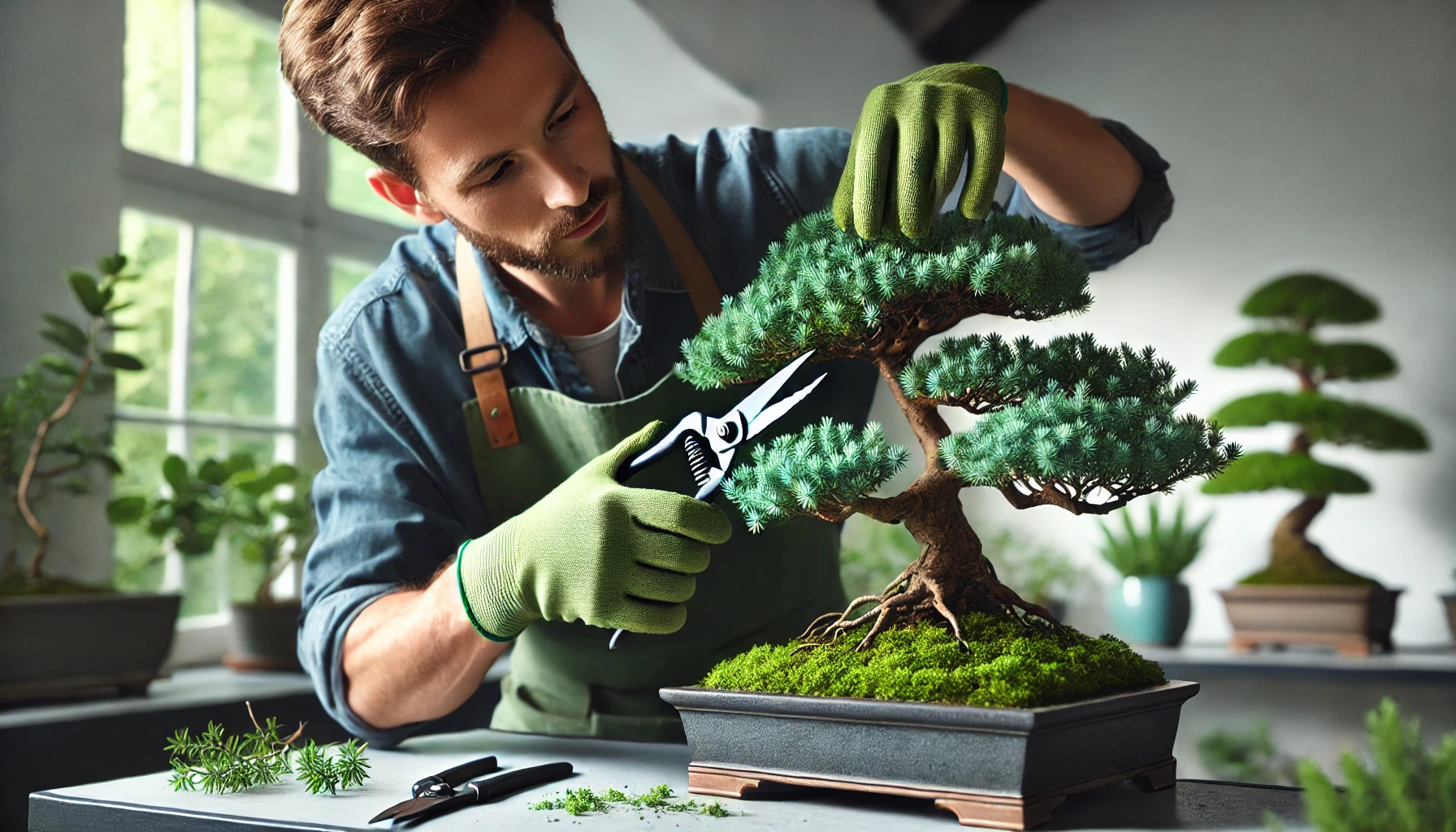
 Seasonal Care Guide
Seasonal Care Guide
Caring for your Blue Star Juniper Bonsai year-round doesn’t have to be overwhelming. With a little seasonal know-how, your bonsai will thrive in every climate shift. Let’s break it down season by season!
 Spring (Growth Boost Time!)
Spring (Growth Boost Time!)
- Repotting Season: Spring is ideal for repotting, as new growth starts to emerge. Do this every 2–3 years with well-draining bonsai soil.
- Fertilize Lightly: Begin feeding with a balanced slow-release fertilizer every 4–6 weeks.
- Pruning Time: Remove dead foliage and lightly trim new shoots to shape your tree without stressing it.
Pro Tip: Keep an eye out for pests like spider mites—they love warm spring air!
 Summer (Sun Lover’s Season)
Summer (Sun Lover’s Season)
- Full Sun Needed: Your Blue Star Juniper loves 6–8 hours of direct sunlight. Morning sun is best in very hot climates.
- Water Smart: Check daily, but only water when the topsoil feels dry. Overwatering = root rot
.
- Watch for Burn: If temps soar above 90°F (32°C), provide light afternoon shade or move to a semi-shaded area.
Quick Check: Yellowing needles? Could be sunburn or poor drainage—adjust accordingly!
 Autumn (Wind-Down Mode)
Autumn (Wind-Down Mode)
- Light Fertilization: Continue feeding once a month until mid-autumn to support root health.
- Minimal Pruning: Only snip unruly growth. Don’t style aggressively—your tree’s energy is slowing down.
- Prepare for Dormancy: Reduce watering frequency and stop fertilizing by late fall.
Tip: Clean fallen needles and debris to prevent mold and pests during dormancy.
 Winter (Rest & Protection)
Winter (Rest & Protection)
- Outdoor Dormancy Needed: Junipers need cold to rest, but protect from freezing winds and deep frost.
- Mulch the Pot: Insulate roots with straw or mulch around the pot if temps dip below 25°F (-4°C).
- Minimal Watering: Once every 2–3 weeks may be enough, depending on conditions. Just don’t let it fully dry out!
Optional: Use a cold frame, unheated garage, or bonsai shelter for added protection in harsh winters.
 Bonus Tip: Year-Round Checks
Bonus Tip: Year-Round Checks
No matter the season:
- Inspect weekly for pests and root health
- Clean tools and pots regularly
- Avoid drastic changes in environment—Junipers like consistency
By tuning into the seasons 
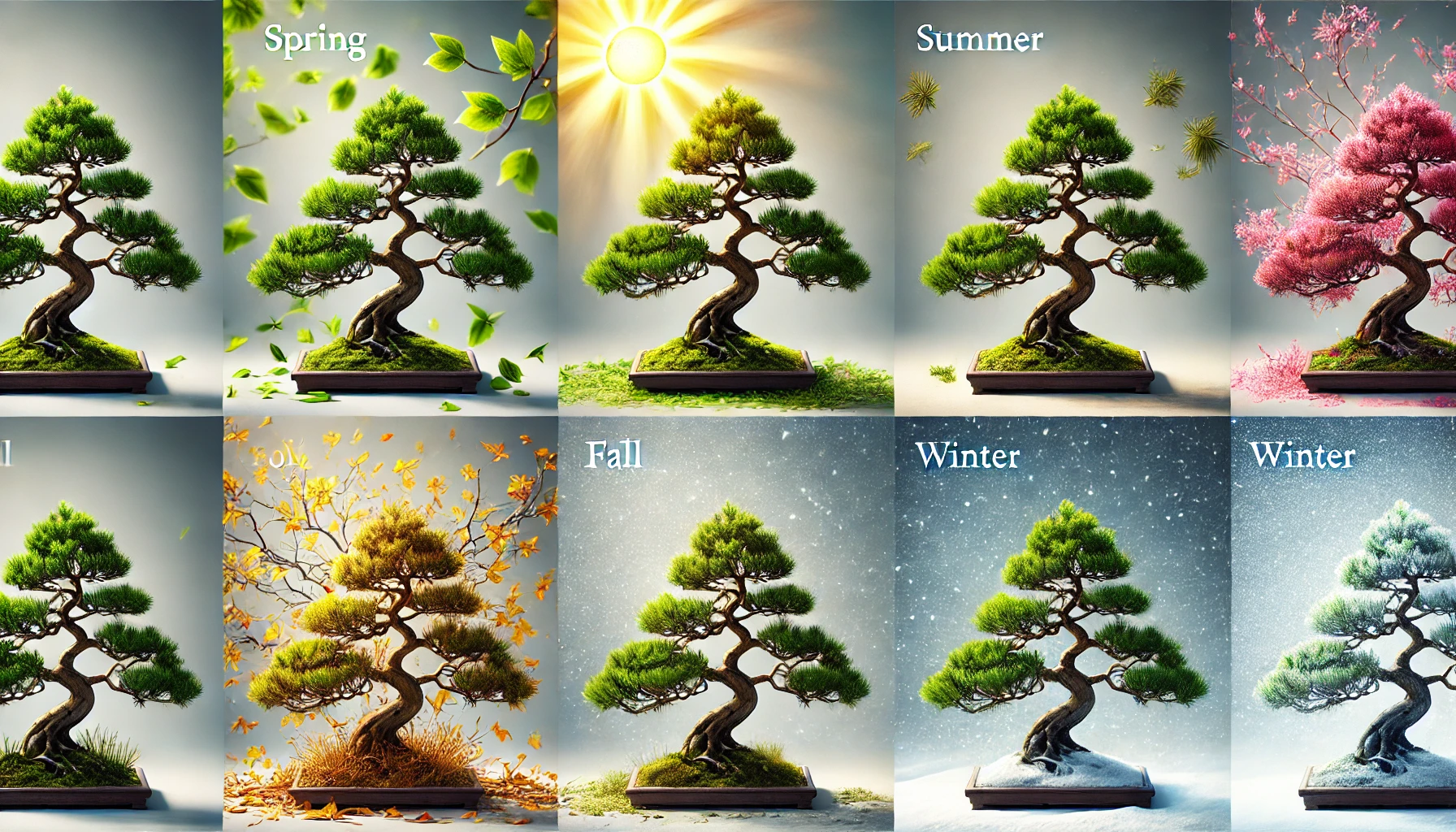
 Common Problems and How to Fix Them
Common Problems and How to Fix Them
Even with the best care, your Blue Star Juniper bonsai may occasionally face some issues. Don’t worry! Here’s a guide to the most common problems—and how you can fix them fast.
1.  Browning or Dry Needles
Browning or Dry Needles
Cause: This is often due to underwatering, poor humidity, or root damage.
Fix it:
- Check the soil moisture—water when the top inch feels dry.
- Mist your bonsai daily if your environment is dry.
- Ensure your pot has drainage holes and avoid letting the roots sit in water.

2.  Leggy, Sparse Growth
Leggy, Sparse Growth
Cause: Not enough sunlight or improper pruning.
Fix it:
- Place your bonsai in full sun (at least 6 hours a day).
- Pinch back new growth during the growing season to encourage compact foliage.
- Avoid over-fertilizing—it can cause weak, stretchy growth.

3.  Pests (Spider Mites, Aphids, Scale)
Pests (Spider Mites, Aphids, Scale)
Cause: Dry air and poor air circulation often invite pests.
Fix it:
- Inspect regularly under leaves and along branches.
- Spray with insecticidal soap or neem oil weekly until pests are gone.
- Increase humidity and airflow around your bonsai.

4.  Yellowing or Dropping Leaves
Yellowing or Dropping Leaves
Cause: This can result from overwatering or sudden environmental changes.
Fix it:
- Let the soil partially dry between waterings.
- Avoid moving your bonsai frequently—keep it in a stable spot.
- During winter, reduce watering slightly and protect it from drafts.

5.  Root Rot
Root Rot
Cause: Constantly soggy soil or poor drainage.
Fix it:
- Unpot and inspect the roots—trim off any black, mushy areas.
- Repot with a well-draining bonsai soil mix.
- Water only when the top layer of soil begins to dry out.

 Final Word
Final Word
By keeping a close eye on your Blue Star Juniper and responding quickly to signs of stress, you’ll ensure it stays healthy, lush, and thriving for years to come 
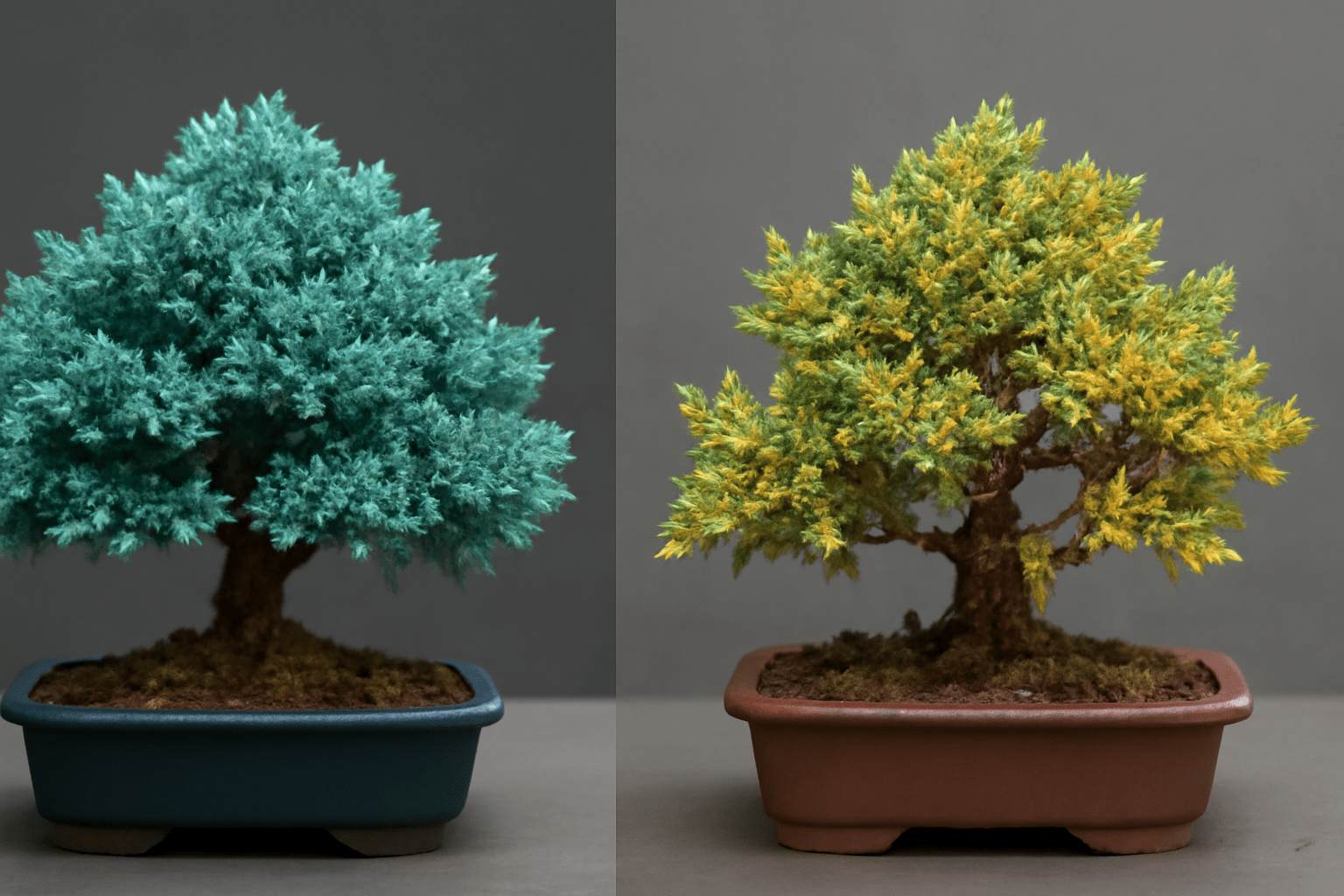
 Conclusion
Conclusion
The blue star juniper bonsai tree is a perfect starting point for beginners who want to explore the art of bonsai without feeling overwhelmed. Its hardy nature, slow growth, and striking silvery-blue foliage make it both beautiful and forgiving — an ideal combination for learning and growing.
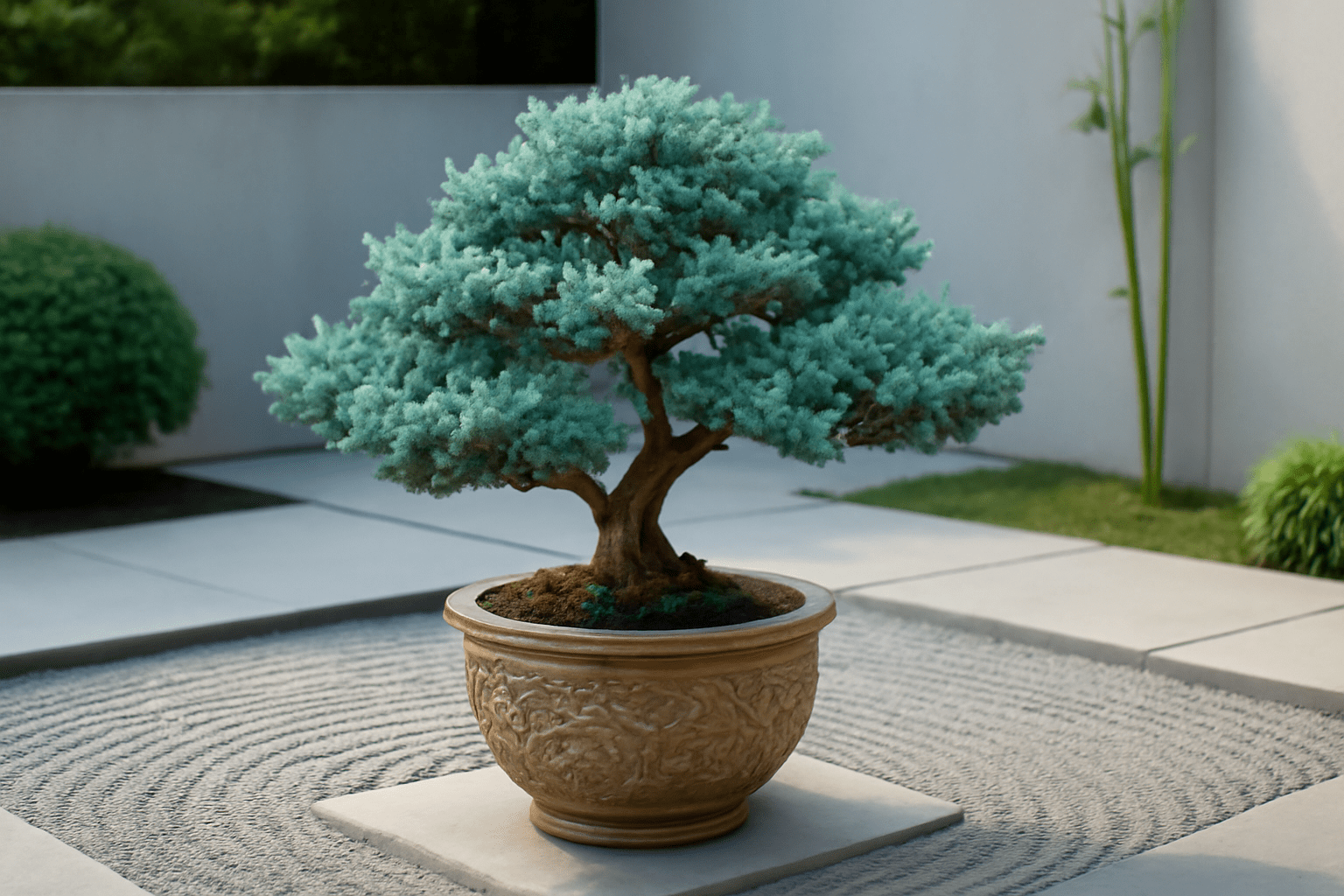
By now, you’ve learned how to care for, prune, style, and troubleshoot your bonsai with confidence. Whether you’re shaping your first branch or repotting for the seasons, remember: bonsai is a journey of patience and creativity. With the right care and a little practice, your blue star juniper will thrive for years, becoming a living piece of art in your home or garden.
Frequently Asked Questions(FAQ)
Is the blue star juniper a good bonsai tree for beginners?
Yes! The blue star juniper bonsai tree is ideal for beginners because it’s hardy, slow-growing, and easy to shape. Its compact size and drought tolerance make it a forgiving option for first-time bonsai enthusiasts.
Can I keep a blue star juniper bonsai tree indoors?
Not recommended long-term. Blue star junipers thrive outdoors in full sun and fresh air. Indoor conditions often lack the light and airflow they need, leading to browning and poor health over time.
How often should I water my blue star juniper bonsai tree?
Water when the top 1 inch of soil feels dry. Don’t let it dry out completely, but avoid overwatering — junipers prefer slightly dry conditions over soggy roots.
When and how should I prune a blue star juniper bonsai?
Prune in late spring or early summer by snipping off new growth and removing dead or overlapping branches. Always use clean, sharp tools and avoid cutting back to bare wood.
How do I shape a blue star juniper bonsai tree?
You can shape it with gentle pruning or use bonsai wire to guide branch direction. Start with basic styling, and adjust over time as the tree grows. Go slowly to avoid damaging branches.
Does a blue star juniper bonsai need fertilizer?
Yes. Use a balanced, slow-release bonsai fertilizer once a month during the growing season (spring to early fall). Avoid fertilizing during winter dormancy.
How often should I report my blue star juniper bonsai?
Repot every 2–3 years in early spring before new growth appears. Trim about one-third of the root mass and refresh with well-draining bonsai soil.
Why is my blue star juniper bonsai turning brown?
Browning can be caused by overwatering, poor sunlight, pests like spider mites, or indoor placement. Improve drainage, move it to full sun, and inspect for pests to restore health.






